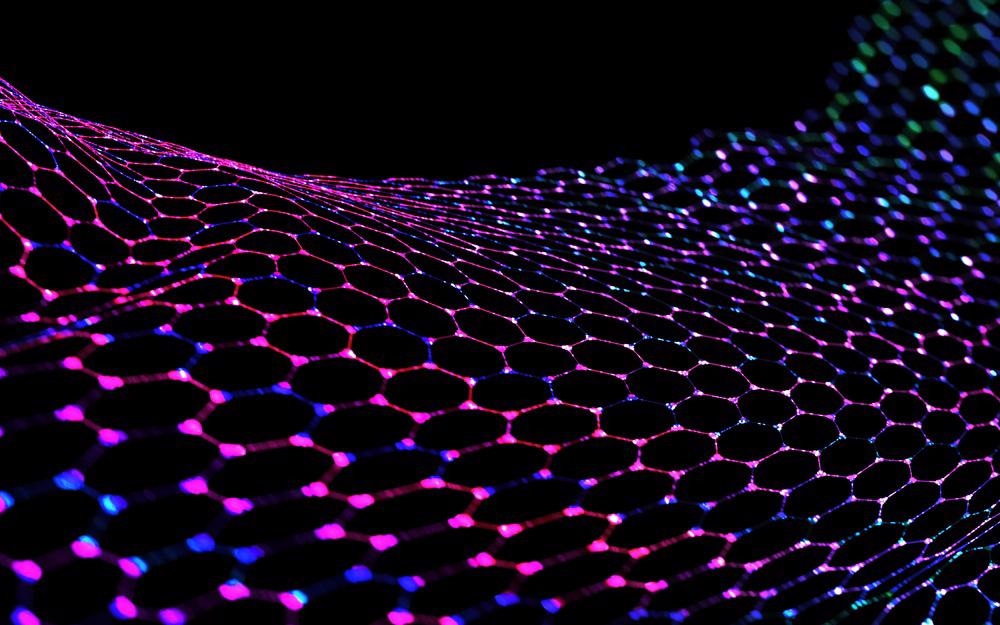Nano-imaging techniques have made it possible to investigate new applications of nanotechnology in environmental research, medical science, and engineering.

Image Credit: Marco de Benedictis/Shutterstock.com
The sophisticated performance of the materials is the result of the arrangement of their structure at the atomic level. A fundamental component of small nanoscale science includes coordination of excellent electrical conductivity, light emission, and other structural changes taking place at the nanoscale.
However, understanding the material's behavior at the atomic level requires sophisticated imaging techniques. Raw electron microscope images face challenges of precisely distinguishing the structural details of individual particles due to a low signal-to-noise ratio.
Advancing nano-imaging means boosting the signal and, as a result, maximizing the amount of information that can be obtained from the images.
The resulting output is a powerful source of information on basic nanoparticle parameters and domain topologies, as well as a framework for determining particle flexibility. The nano-imaging method allows scientists to simultaneously analyze electrical, spectral, and mechanical properties at the elementary length scale.
What are 2D Materials?
Two-dimensional (2D) materials, such as graphene, silicate clays, layered double hydroxides (LDHs), transition metal oxides (TMOs), and transition metal dichalcogenides (TMDs) resemble a broad, albeit very thin sheet in which only one dimension of the material is nano-sized.
Due to their unique structures and ability to provide desired properties through synthetic manipulation, 2D materials are well researched in nanotechnology.
The materials are demonstrated to be chemically and energetically unstable, the properties that come from their dangling bonds, and work in favor of pushing the material to rearrange its structure to lower its surface energy.
The breakdown of weak van der Waal interactions, spatial confinement, and a rise in the surface area-to-volume ratio can result in extraordinary and tunable physical, chemical, optical, and biological capabilities.
2D materials have stimulated the interest of the imaging industry given their superior electrical and thermal conductivity, remarkable mechanical strength, and unique optical properties.
Nano-Imaging Performance with 2D Materials
In imaging techniques, the electronic band configuration determines its electrical and optical properties. This results from the periodicity of the crystal structure and characterizes how electrons travel through the medium.
When a material transitions from bulk to 2D, the periodicity in the plane is eliminated, which can drastically alter the band structure.
Photoacoustic imaging (PAI) is a type of imaging that uses a pulsed laser, primarily as a source of excitation. As a result, deep tissue penetration and good spatial resolution are achieved.
2D TMOs are made up of oxygen atoms and transition metals, and their structures differ considerably on the components.
The materials have a wide range of bandgaps, allowing for the construction of optical and electric properties at practically any wavelength. Individual particles from the images are extracted, allied relative to one other, and further dynamically categorized based on apparent similarities.
As a result, each particle class becomes an average of many comparable particles, which improves the overall signal. Because of their ability to mix them to generate nanocomposites and hybrid materials, 2D particles are valuable for more than one imaging approach.
Current Advancement and Challenges
The current nano-imaging techniques consist of Magnetic resonance imaging (MRI), computed tomography (CT), positron emission tomography (PET), single-photon emission computerized tomography (SPECT), optical imaging, ultrasound, and photoacoustic imaging.
PET and MRI use superparamagnetic iron oxide nanoparticles (SPIONs)-based platform.
It combines PET's high sensitivity with MRI's spatial resolution and contrast in samples, which reduces the transverse relaxation period and is commonly used for improving dark contrast.
Although various scientific fields, such as functional electronics, catalysts, supercapacitors, batteries, and energy materials, are heavily dependent on nano-imaging using 2D materials, a good understanding of the physical mechanisms involved in their processing in real-time and under real settings remains a major barrier.
In terms of chemical and biological investigation, the degradability, colloidal stability, and protein structure, as well as the negative consequences in imaging applications, need immediate attention. Still, many scientists are currently investing considerable time and resources in nanoparticle stability.
According to the researchers, proteins can be employed as a dispersion agent to improve the stability of 2D materials. A bovine albumin serum protein corona (SNSs-BSA) is also expected to improve silicene nanosheets' colloidal stability in various physiological settings.
Future of Nano-imaging with 2D Materials
The future of nano-imaging seeks considerable attention in simplifying the complexity of toxicokinetic and toxicodynamic events with 2D materials.
If these challenges are dealt with prudence, we may witness remarkable advances in sectors, such as cancer treatments, drug delivery, bioimaging, and tissue engineering.
The technology also has a huge potential in being utilized as sensors to diagnose and monitor the environment to remove pollutants and remediate contaminated water.
Continue reading: Atomic Force Microscopy-based Nanoindentation
References and Further Reading
Chimene, D., Alge, D., & Gaharwar, A. (2015). Two-Dimensional Nanomaterials for Biomedical Applications: Emerging Trends and Future Prospects. Advanced Materials. doi:10.1002/adma.201502422
Hess, P. (2021). Bonding, structure, and mechanical stability of 2D materials: the predictive power of the periodic table. Nanoscale Horiz. doi:10.1039/D1NH00113B
Khan, I., Saeed, K., & Khan, I. (2019). Nanoparticles: Properties, applications and toxicities. Arabian Journal of Chemistry. doi:10.1016/j.arabjc.2017.05.011
Li, X., Zhang, X.-N., Li, X.-D., & Chang, J. (2016). Multimodality imaging in nanomedicine and nanotheranostics. Cancer Biol Med. doi:10.20892/j.issn.2095-3941.2016.0055
Lyumkis, D. (2019). Challenges and opportunities in cryo-EM single-particle analysis. J Biol Chem. doi:10.1074/jbc.REV118.005602
Mourdikoudis, S., Pallares, R., & Thanh, N. (2018). Characterization techniques for nanoparticles: comparison and complementarity upon studying nanoparticle properties. Nanoscale. doi:10.1039/C8NR02278J
Silva, G., Franqui, L., Petry, R., Maia, M., Fonseca, L., & Fazzio, A. (2021). Recent Advances in Immunosafety and Nanoinformatics of Two-Dimensional Materials Applied to Nano-imaging. Front Immunol. doi:10.3389/fimmu.2021.689519
Zhang, H., Fan, T., Chen, W., Li, Y., & Wang, B. (2020). Recent advances of two-dimensional materials in smart drug delivery nano-systems. Bioact Mater. doi:10.1016/j.bioactmat.2020.06.012
Disclaimer: The views expressed here are those of the author expressed in their private capacity and do not necessarily represent the views of AZoM.com Limited T/A AZoNetwork the owner and operator of this website. This disclaimer forms part of the Terms and conditions of use of this website.